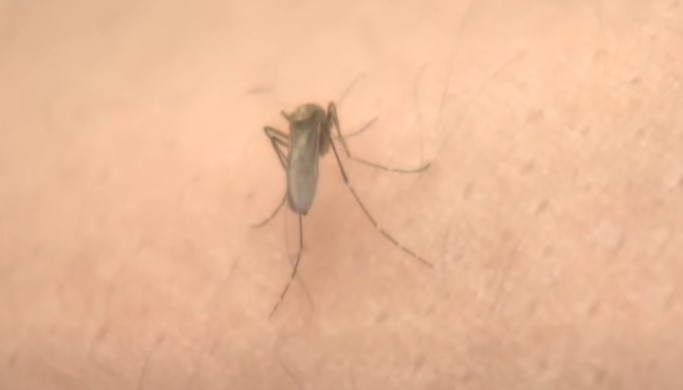Sloth fever is an informal name for Oropouche virus infections first found in Trinidad and Tobago in 1955. The virus spreads by midges and mosquito bites and is endemic in central and eastern South America.
Sloths are the natural hosts of the virus, which has recently emerged as an infectious disease, causing concern among people who had never previously even come across the term’sloths’. Since the virus mainly targets sloths, recently there is increasing fear of the virus transmission to other species like humans. The present article aims at describing the history of Sloth Fever Virus, its signs, causes of spread, protective measures, as well as ways of combating this recent strange viral or bacterial disease.
What is the Sloth Fever Virus?
Sloth Fever Virus is a newly emerging virus that was first identified to infect sloths in Central and South American regions. It falls in the category of zoonotic viruses, which are diseases that can be passed from animals to humans. Sloths are arboreal, largely solitary and normally not very mobile animals and yet the virus has passed from one of them to the others, or at least some, and that is what makes such passages disturbing.
Origins and Discovery
SFV was identified in 2023 by scientists analyzing the wellbeing of wildsloths in the regions of the Amazon. The virus could have been is believed to have come from a new strand of viruses within the natural habitat of the sloth. It’s discovery has led to the further examination of environmental changes and habitat loss as being causes of new diseases.
Transmission and Spread
Direct contact with the affected sloths or their bodily secretions is the major mode of transmission of SFV. It is also transmitted through bites and scratches. As well as through consumption of food and water that has been infected by the virus. No example of human infection has been recorded but the specialists have suggested that coming into contact with the animals or their environment may prove adverse.

Signs of Sloth Fever Virus
Infected sloths exhibit a range of symptoms, including:
Lethargy: A significantly reduced rate of basal metabolic activity, and it was still easy to see it for even the most sluggish of all animals, that is, the sloths.
Fever: High fever and sometimes chills or shivering cannot constitute a better example of a cardinal symptom.
Respiratory Issues: Shortness of breath, coughing or wheezing, to mention but a few.
Skin Lesions: Skin sores or rashes, especially those found in the face and on the limbs.
Loss of Appetite: Human nutritive behavior, which is the frequency of feeding, appears to deteriorate, hence resulting in weight loss.
The degree of manifestation may be different, but the disease can be fatal, especially if the affected animal is young or has a weakened immune system.
Potential Impact on Humans
It has not been exactly credited to have infected any human being. However, this aspect of zoonotic transmission cannot be entirely ruled out. Transmission to man could lead to diseases similar to those exhibited by the affected sloths, such as fever, respiratory disorders, and skin rashes. This is an issue because there is always the potential for serious outcomes or consequences. Especially among patient groups that may already be at risk.
Prevention and Precautions
To minimize the risk of SFV transmission, it is essential to:
Avoid Direct Contact: Avoid touching wild sloths or their environments, particularly in regions where the virus has been detected.
Practice good hygiene: After any contact with animals or natural environment, just wash hands with warm water.
Monitor Wildlife Health: In case of illness of a sloth or any other wildlife, inform the local authorities or local wildlife conservation organizations.
Stay Informed: Ensure that you do research and be acquainted with the current research and recommendations on SFV by health departments.
Treatment and Management
At the present, there is no cure for SFV, and treatment for this disease is mainly supportive. No specific treatment exists for the virus, except supportive care in the form of hydration and feeding, as well as treatment of other infections that result from the virus.
Veterinary care may be necessary for given sloths, especially when the conditions affecting them are severe. Potential human cases might use traditional antiviral medications, and additional supportive therapy would be prescribed; however, further studies are needed.
Sloth Fever Virus is one of the newly emerging infectious diseases, hence the need for surveillance and awareness of zoonotic diseases. The virus mainly targets sloths. However, since it is possible to transmit between species, it is important to remain cautious and careful. Therefore, if one would take his or her time to learn more about wildlife and be keen when approaching them. The diseases associated with sampling for value will be avoided, thus protecting the health of the wildlife and individuals.
Frequently Asked Questions (FAQs)
1. Can humans be infected with the Sloth Fever Virus?
As of now, there have been no reports of infecting humans. However, zoonotic reuse has been confirmed and therefore should be handled with care.
2. How is SFV diagnosed in sloths?
Using the symptoms exhibited in patients and clinical examination. Some features of SFV can be diagnosed from the blood tests as well as viral isolation.
3. Is there any vaccine for the sloth fever virus?
Unfortunately, there is yet no known vaccine for SFV. But there are studies that aim to discover ways to prevent the virus from spreading.
4. Slot disease and Sloth Fever are relatable or not?
Sloth fever is not related with slot disease because they are two different things that affect sloths. Typically, sloths suffer from sloth fever which is a specific ailment that affects them due to several harmful microorganisms as for slot disease or slot syndrome, it refers to the condition experienced by gaming machines or even slots and has nothing to do with health problems.

